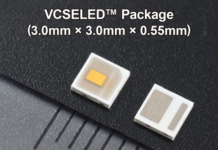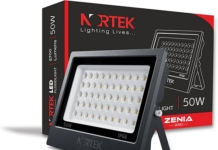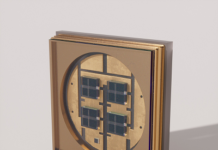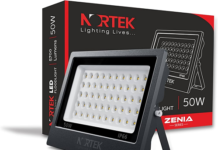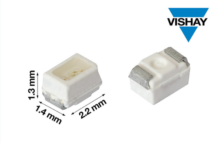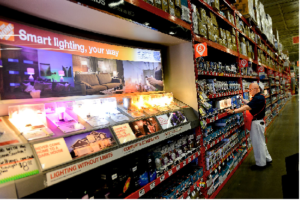
Ninety percent — that’s how much the U.S. Department of Energy estimates prices for LED bulbs have plummeted since 2008.
So when customers enter the Highland Park Home Depot where Clay Peays works, he says he often directs them towards LED bulbs. “That’s what I sell them on. I sell them on savings,” he said.
Those savings should add up. A recent study by the Consumer Federation of America found people can cut their spending by $1,000 or more within the next decade if they switch over to LED bulbs in their households.
Rick Johnson, a resident of Highland Park who was shopping at the Home Depot in East Liberty recently, said his family has been slowly switching over since LEDs hit the residential market in the early 2000s. Mr. Johnson said he’s become smitten with the bulbs because of their color and energy efficiency.
He’s not the only one. According to a 2015 Department of Energy study, almost 78 million LED bulbs had been installed in homes across the country — up from the 400,000 in 2009.
Joe Romm, the founder and editor of ClimateProgress.org, calls it the “fastest technology revolution in modern history.”
“I think they became a no-brainer,” Mr. Romm said. “And you see the same kind of inflection curve that solar had five or six year ago, and that electric cars are about to hit because of the battery price. It is rare that a revolution in the energy space happens so fast that it actually visibly changes the energy demand of a whole country.”
Getting people to embrace LED lighting is not a particularly new idea. Since 2007, when legislation was signed to gradually phase out the manufacturing of certain incandescent bulbs, activists have been arguing for the switch.
The bulbs are more efficient, last longer, and cost less than incandescent and halogen bulbs. The average LED bulb has a shelf life of at least a decade, drains only about $1 of electricity per year, and often costs less than $5, according to the Consumer Federation of America.
The payoff for the country was clear enough that Congress pushed the switch along. The Energy Independence and Security Act of 2007, which went into effect in 2012, effectively banned the production of incandescent bulbs by 2014.
When LED bulbs were first created, though, they were often more expensive than their counterparts and known for casting the room in a harsh light, although the electronics industry — TVs, laptops, cellphones — frequently used them, said Mr. Romm.
Improvements have driven the price down and added attractive features like being color-customizable and programmable, able to adjust lighting levels as the day goes on.
That said, the Consumer Federation of America isn’t convinced consumer knowledge about light bulbs — and the options available — has kept pace with the marketplace changes.
Only 36 percent of respondents to a June 2016 CFA survey knew a “fair or great deal about light bulbs.” And Mr. Peays said he rarely encounters a customer who comes to Home Depot knowing which light bulbs they want to purchase.
Andrew deLaski, a member of the American Council for an Energy-Efficient Economy, said lighting companies have shouldered the burden of educating average consumers. For example, General Electric, which manufactures a large slice of household light-bulbs in the country, asked consumers to pledge to convert to LED bulbs, according to Alicia Gauer, a company spokesperson.
“Last year, we wrote a Dear John letter breaking up with CFL [compact fluorescent lights] and declaring our love for LED on Valentine’s Day as a way to engage dialogue in a fun way around the benefits of LED and their ease of adoption,” Ms. Gauer wrote.
Still, last year for the first time in history, the lighting industry saw LED revenue match traditional lighting revenue — that is, non-LED revenue — according to Ms. Gauer. She said GE estimates that by 2020, at least half of all residential light sockets will have been switched to LEDs.
Mr. Romm, at ClimateProgress.org, said not to worry about continued confusion among consumers, arguing that word of mouth and new developments will help convert them.
“It’s always been the case that the consumer market is going to be the last market, because consumers are very price sensitive,” he said, noting that most LED lights are bought by commercial and private companies.
Mr. deLaski said consumers may be dealing with a bit of inertia.
“People buy what they bought before, so overcoming that inertia with a common household product, particularly one that doesn’t have a lot of pizzazz like a light bulb, is difficult,” he said. “You know, how much effort are you going to put into researching your next LED light bulbs?”
By: Brandon Dixon / Pittsburgh Post-Gazette



